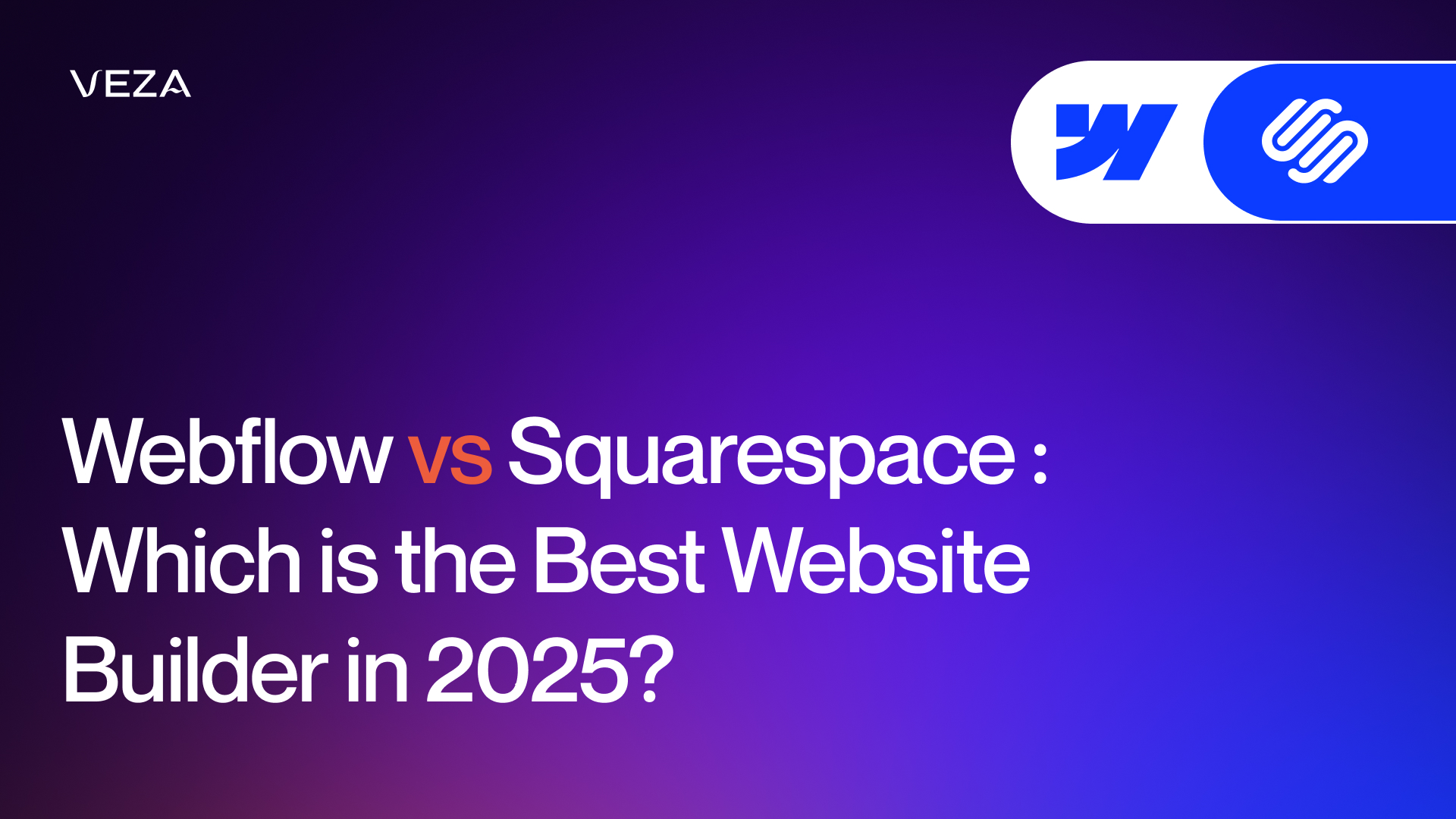Navigating the world of website builders can be challenging, especially with platforms like Webflow and Squarespace offering such distinct approaches to website creation.
Exploring website builder options to guide brand’s online presence, understanding the unique benefits each platform provides can make a big difference.
Here’s how Webflow and Squarespace stack up, with a focus on usability, customization, scalability, SEO, and pricing to help you decide which best fits the website’s goals.
Exploring the Features of Webflow
Webflow stands as a powerful, versatile solution that combines visual website design, hosting, and CMS capabilities into one platform. It’s designed to cater to businesses that require detailed customization and performance optimization, making it ideal for brands seeking a competitive edge.
Webflow provides users with:
- Full customization potential, allowing complete control over design and structure.
- Advanced SEO tools that facilitate on-page optimization, schema markup, and clean code output.
- Scalable hosting, ensuring stable performance during traffic spikes.
- A flexible CMS and content editor designed for easy collaboration and dynamic content handling.
With its focus on providing a professional toolkit for creating and managing websites, Webflow positions itself as a comprehensive platform that can make your website grow with your business.
Squarespace: A User-Friendly Alternative
.webp)
Squarespace, in contrast, aims to simplify the website creation process by focusing on a smooth user experience and ease of management.
While Webflow offers advanced customization, Squarespace is known for its templates, making it ideal for teams looking for a plug-and-play option that maintains a polished appearance with minimal effort.
Squarespace offers:
- Simplicity through its drag-and-drop interface, makes it easy to navigate and ideal for users with limited technical experience.
- A range of professionally designed templates that can be customized but may be limited in flexibility.
- Integrated e-commerce capabilities are suitable for small to mid-sized businesses.
- Affordable plans tailored to meet the needs of various types of websites, from personal websites to growing online stores.
For companies prioritizing speed, ease, and a lower learning curve, Squarespace can be an effective choice.
Key Comparisons
Customization and Design Flexibility
Webflow is unmatched in terms of customization. Users can access every element of design and layout, manipulate HTML and CSS, and even export clean code for external use if needed. This makes Webflow ideal for websites with unique design requirements or those aiming to create a custom-tailored brand experience.
Squarespace, while offering flexibility within its templates, does not allow for the same level of granular customization. It’s built around a structured design philosophy, which can streamline the process for teams looking to create visually appealing sites quickly without investing time in extensive design work.
Content Management and Scalability
Webflow’s CMS is designed for websites that need dynamic content management with features like database structuring and content templating. It’s a scalable solution, allowing larger teams or agencies to manage intricate content needs across different site sections.
Squarespace, while offering a simple CMS for static content, can become restrictive as content management needs to grow. Its platform is well-suited for smaller teams or businesses looking to manage straightforward content but may require workarounds for more advanced functionality.
SEO and Performance Optimization
In terms of SEO, Webflow’s advantage lies in its ability to generate clean code, which enhances site speed and SEO performance. It also includes advanced SEO tools, such as custom title tags, meta descriptions, and URL structure controls. For brands that rely on search engine visibility as a key part of their digital strategy, Webflow offers essential SEO capabilities that Squarespace doesn’t fully match.
Squarespace provides fundamental SEO features such as title and meta descriptions, but it lacks the depth and control Webflow offers. This makes Webflow the preferred choice for teams with more technical SEO requirements, while Squarespace’s simplicity might appeal to those with basic SEO needs.
Pricing Flexibility and Value
Webflow offers a wider range of pricing plans, including a free plan for simple sites, which can be scaled as needed. This flexibility allows businesses to start small and expand their plan in line with growth. Companies with complex website requirements and long-term scaling needs may find Webflow’s pricing more adaptable.
Squarespace’s pricing is straightforward and competitive, with plans catering to individual and business users. However, as a website scales, it may need to transition to higher pricing tiers or make additional investments to keep up with functional demands. For companies seeking a set price model without the need for extensive scalability, Squarespace remains a cost-effective choice.
Final Thoughts
For businesses searching for the best platform for their needs, the choice between Webflow and Squarespace will mostly depend on customization needs, growth plans, and budget. Webflow is ideal for websites that require a highly customizable, SEO-focused platform with scalable content management options.
To get started with Webflow - contact Veza Digital! Our experts will help you transform your brand into a powerful engine for future success.
Ultimately, if your brand relies heavily on a unique design and needs the flexibility to expand its online presence, Webflow is the all-in-one tool necessary to stand out.


